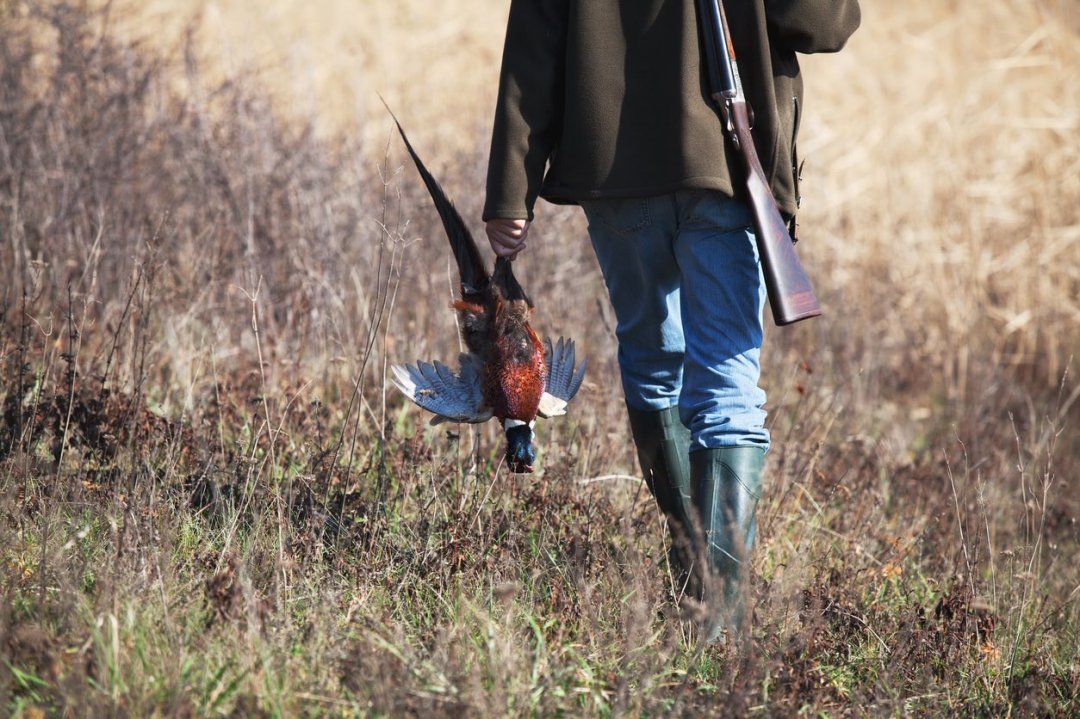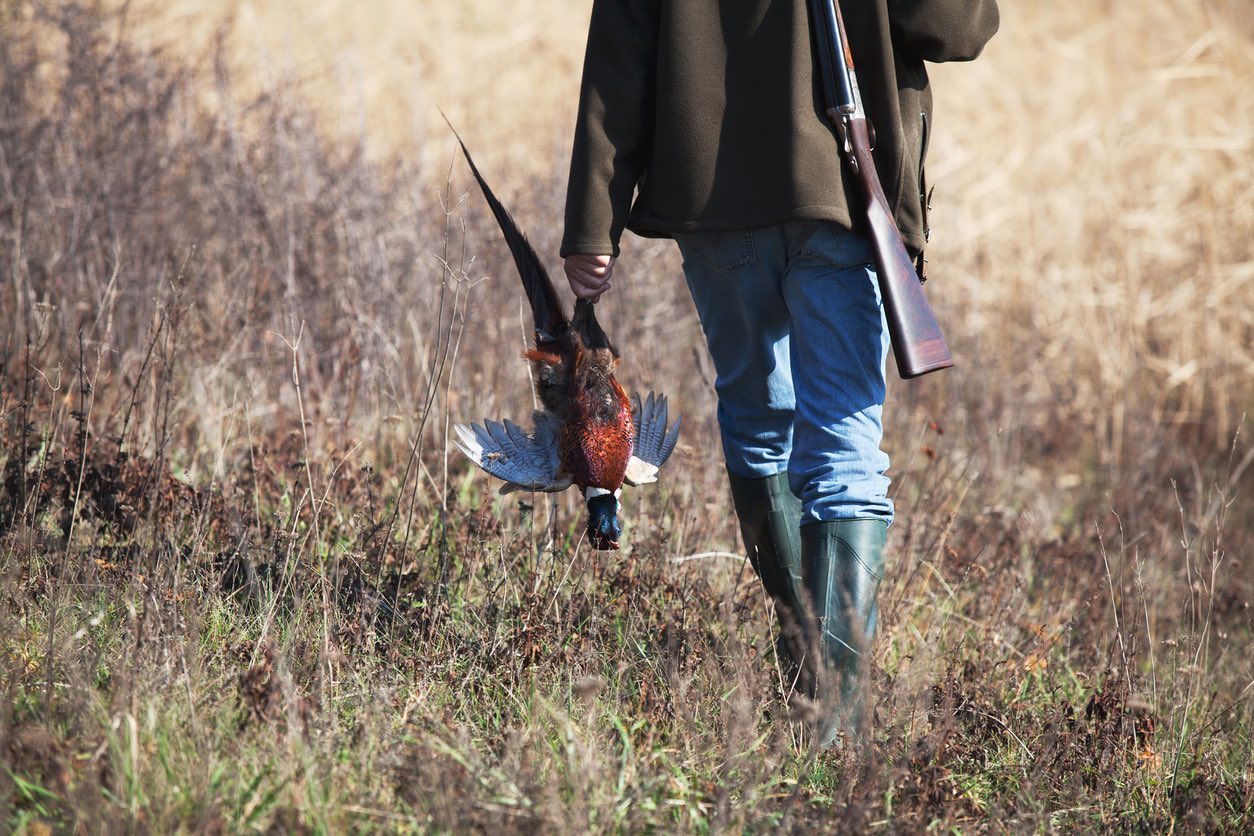I love game, me. Not the great game, of course, which is football. But game, real game, the sort that was running about in hedgerows and copses, and in fields of spent brassicas and wintry stubbles, until you shot it.
At this time of year there’s nothing better, to my mind, than a day out in the country with a gun and a dog, shooting a few brace of pheasant or duck, and then taking them home for a bit of butchery. People talk about from farm to fork. Good for them. I think from trigger to tongue is even better.
I know that butchery sounds grisly and may be shocking to the sanitised ears of Tesco man or Waitrose woman. But the fact is eating meat or fish is a grisly business. Regardless of the posh packaging, there’s been blood spilled along the way. So why not spill some of it yourself?
Look away now if you’ve a weak stomach. When you dress a pheasant (as preparing it is known) I’m with the Jacobins. Begin with some decapitation. You remove the pheasant’s head and then the feet (pinched at the knee, where the feathers end) with a pair of garden secateurs. Don’t tell the wife because they’re hers. These all come off in a snip. I then usually hand the glorious head of the cock pheasant – a rainbow of delighting plumage in purples, reds and shining greens – to my younger son Douglas, who has a play with the beak and may or may not make squawking sounds. The wings come off at what one might call the shoulder – a snip each – and these I have discovered also make the most fantastic toys for curious children. Dougie will run up and down the corridor chasing his mother as the ecstatic dog leaps after him while he imitates a bird in flight.
Eating meat or fish is a grisly business. Regardless of the posh packaging, there’s been blood spilled along the way. So why not spill some of it yourself?
The head, feet and wings are the easy part. Next you have to pluck your bird, which can take a while if it’s not been hung for long. Keep at it if you’re new to this game, so to speak. The tail feathers of an old cock, for instance, can be pretty tough, and the wife’s secateurs may come in handy again. Prepare to be struck by the relentless beauty and invention of mother nature as you pluck off the plumage, and – for me anyway – further thoughts about the life you’ve taken for the entirely selfish reason of feeding yourself and your family.
That’s important, though; knowing something died at your hand to give you a few calories is a game-changer, if you excuse the pun. And it doesn’t half give you respect for what you’ve killed. I’d feel pretty guilty if I wasted it after what I’ve put it through. (Not a thought that troubles most of us if we have to discard something from the Morrisons meat counter.)
Moving on with our bird, the home butcher now deals with gizzard; I’ve no idea if that’s the correct word, but this is what I was told by my old mate Paddy’s dad, a dairy farmer in Flintshire who showed me how to do it, so I’ve always called it that. For this, you’ve got to get into the chest at the throat and dig what the bird’s just been eating, which comes out in a pinch from an unspeakable sack in its neck. Then to the business end: prepare a sheet of newspaper, take a sharp knife, cut around the bird’s exhaust pipe as though you were coring an apple, and then – James Herriot-style – insert your fingers into the bird and drag out every last floating thing you can find. It’s not the part I most look forward to and yes, it’s a bit smelly, but if you can do this to a pheasant you’ve earned the right to eat it. Once done, if you would like to dig out the liver from what’s just emerged, go for it – it’ll make a fine jus apparently – but sifting through giblets is a bit too Revenant even for me. I bung this lot away with feathers, sadly wasted, in the food bin.
And now you’re more or less there. Fold up the legs to the breasts and squeeze them into place – just so – and, hey presto, you have one dressed pheasant. Who needs the Waitrose deli counter when the garden shed and a pen knife will do? And you’ve kept the kids happy, too. Repeat a few more times and you’ve enough for a New Year’s Eve dinner party.
For eating, you can roast it, but I tend to boil mine in a big red wine from the supermarket’s bottom shelf, with shallots and a fistful of juniper berries, a treatment rather than a recipe per se that I owe to my Uncle John. The tannins in the juniper berries infiltrate the gamey flesh of the pheasant and mingle with the wine (which also helps prevent drying) to give you something intensely rich, savoury and warming, not least when served with creamy mash and green beans that have been boiled in salted butter.
It’s not Heston, I get it, but it’s the sort of quiet feast that has sustained certain echelons of Britons for centuries: doubtless the sort of meal that gave Henry Fielding the oomph to pen another chapter of Tom Jones, or powered Hogarth to create the ‘Marriage A-la-Mode’. Failing that, pheasant stew is the dish that Pitt the Younger and Lord Castlereagh shared as they plotted the downfall of Napoleon.
So there’s a lot going on in the shooting, dressing and eating of the humble pheasant. At its core, it’s the joy of going out with a gun and dog, watching the damp spaniel scamper about through the undergrowth retrieving what you’ve shot; then it’s the business of trudging for miles in the cold, the rain or the snow across farmland or moors, or valleys and hedgerows; and then it’s the return home bearing game and the sanguine art of dressing your birds. It’s like living in the 18th century for a day. Out there in the sticks, you aren’t just 20 miles from your nearest Argos or Aldi, you’re a good 200 years away. It’s bliss. Sod the metaverse, this is real.
And yes, it’s enjoyable to shoot a bird for similar reasons that it’s enjoyable to have sex. They’re both still essential. Of course it’s also barbaric to shoot a bird, when I suppose it could fly to Switzerland check in to Dignitas to be euthanised for a fee. But I don’t imagine that shooting a bird is any less barbaric than modern intensive farming and butchery techniques. In fact, my guess is that a pheasant probably has a better life and death, especially if they avoid getting Avian flu.
Each to his own, I suppose. I know it’s a long way from Strictly Britain, which has its place. But I rather enjoy being closer to nature in every sense – the good, the barbaric and the smelly. It reminds me that shrink-wrapped rectangular meat doesn’t occur in nature, and that if I’m going to eat something I should, at the very least, be able to take some responsibility for it. Otherwise I’d better stick to the lentils.







Comments